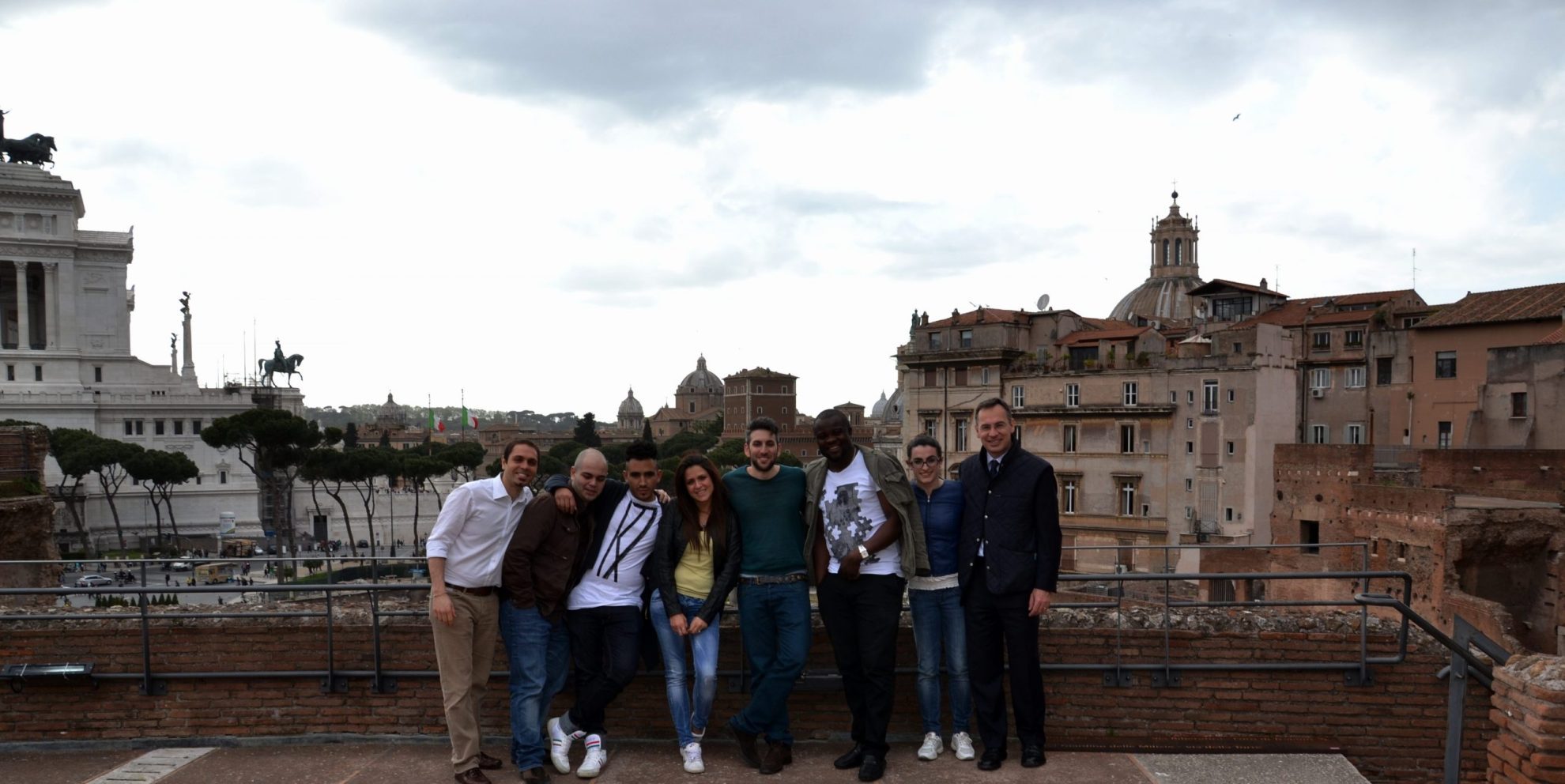Rome Business School visit the markets of Trajan and the exhibition of Mondazzi

A new engagement of the LeArn To programme aimed at learning to do business through art.
On the 20th of April, the curtain was lifted on a new appointment of leARn To, the Rome Business School’s elegant and exclusive programme designed to learn and do business through art. The students and faculty spent an afternoon immersed in the millennial history of the Trajan markets and contemporary works of art, all masterfully recounted through the voice of an expert historian.
At the Trajan’s markets it was possible, furthermore, to observe the advanced personal branding techniques adopted since ancient times – for example, by Augustus – who basically adopted sophisticated marketing techniques and communication by means of literature, art and architecture to depict himself and the gens Julia as being of divine origin.
In addition, Marcello Mondazzi’s exhibition “Fragments of Time”, on show within the same structure, created an authentic blend of ancient Roman civilization, with its archaeological remains, and contemporary art created by using modern materials. The author’s vision transformed the fragments into the beginning of a story that we could all can write, starting with the words “Once upon a time…”
Mondazzi enters the Trajan markets on figurative tiptoes, inserting jars, bowls, baskets and other items made of plastic as witnesses of a past that is cleverly mixed with the present. “My goal was to create a synergy between the masterpiece, the sculpture, and this place, with the extraordinary memory it preserves.”
Through a complex process involving water and fire and thanks to the direct manipulation of the materials, Mondazzi disrupts the characteristics of the cold, plastic industrial materials, transforming them into a “new” plastic, malleable, transparent and translucent. This new material is used to shape and define sculptures and light objects that do not need any kind of support.
The materials used by the artist are sheets of methacrylate, perspex and polycarbonate. Consequently, the moulded artworks, like the archaeological backdrop and the objects that surround them, stand as witnesses to the passing of time and to the events which were a vital condition to constant evolution.
These stimuli, coming from art and culture in their wider interpretation, have once again provided theRomeBusinessSchool’s students with a unique experience and new perspectives of innovation and creativity, which will help make them better managers for a better world.




